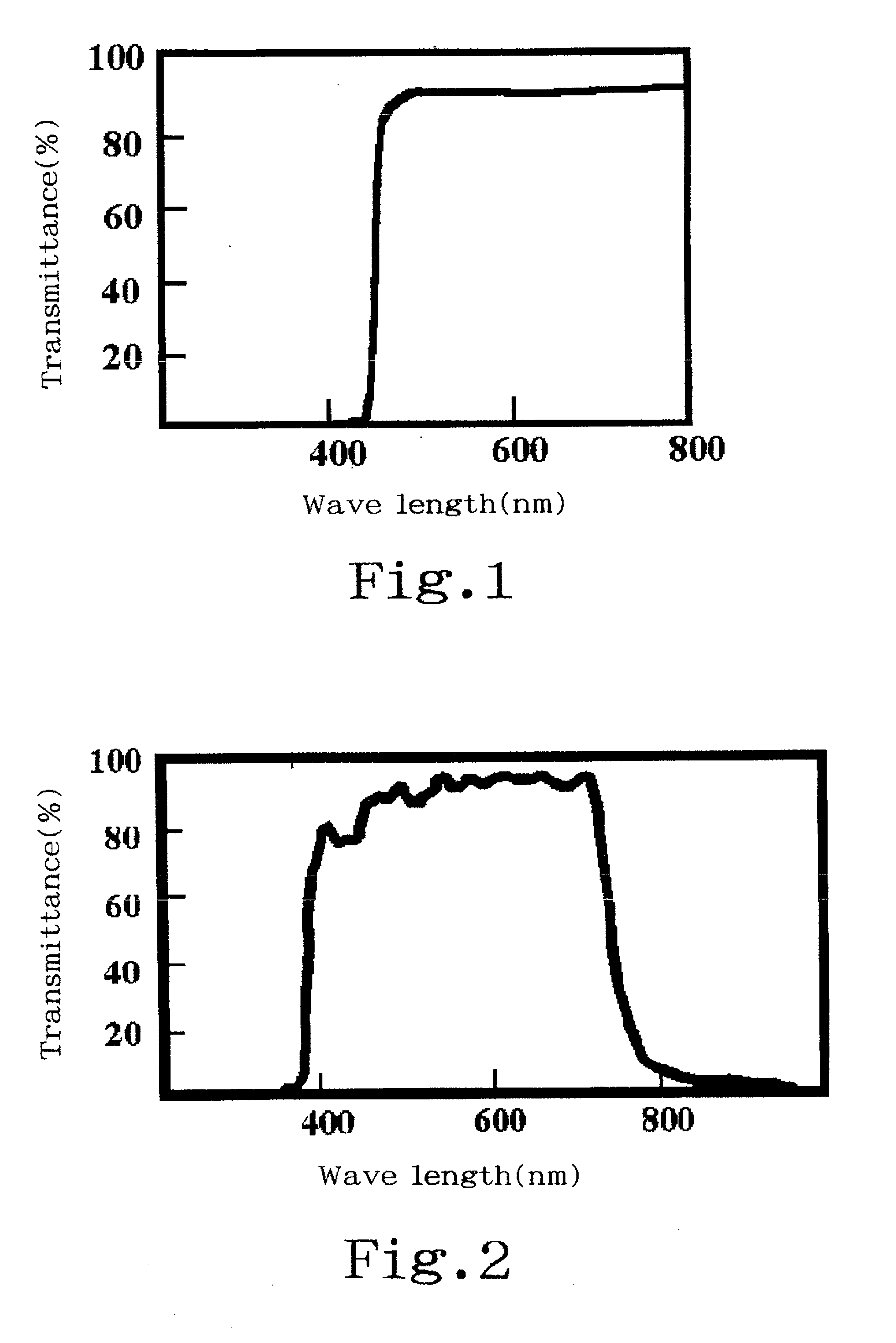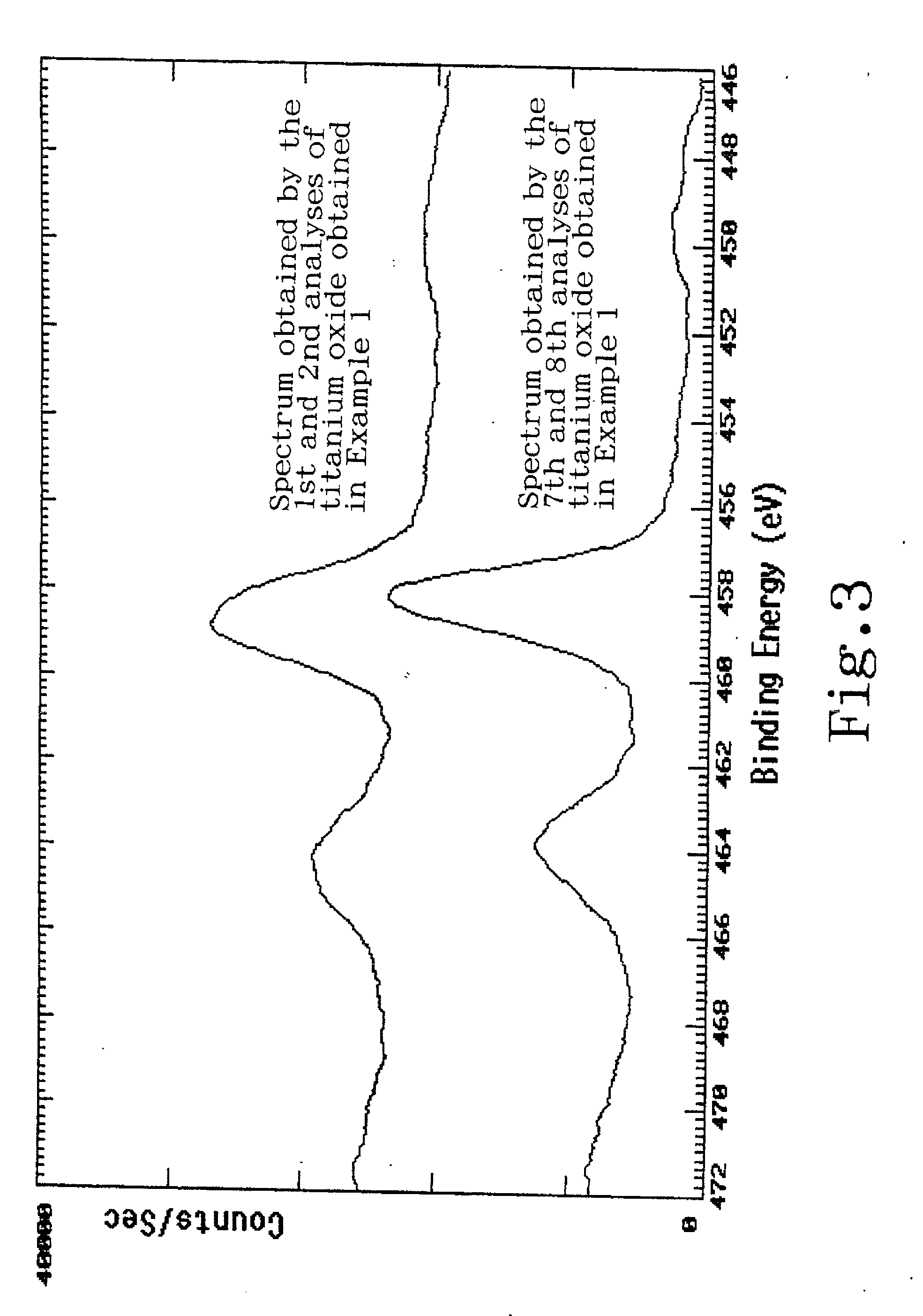Titanium oxide production process
- Summary
- Abstract
- Description
- Claims
- Application Information
AI Technical Summary
Benefits of technology
Problems solved by technology
Method used
Image
Examples
example 1
[0032] Into 1-L flask, was poured 40 g of water. Then, 60 g of a hydrated titanium oxysulfate (produced by SOEKAWA CHEMICAL Co., Ltd.) (purity: 99.93%, SiO.sub.2 content: 0.011% by weight, P.sub.2O.sub.5 content: 0.034% by weight, Nb.sub.2O.sub.5 content:0.03% by weight) was added thereto while stirring and dissolved therein. The resulting solution was concentrated by removing water with an evaporator at 70.degree. C. to obtain a titanium oxysulfate. On the other hand, 270 g of 25% ammonia solution (ammonia water) (special grade, produced by Wako Pure Chemical Industries, Ltd.) was diluted with 180 g of water to prepare 15% ammonia solution. The 15% ammonia solution was cooled in a cooling tank at -30.degree. C. and then the obtained titanium oxysulfate was added thereto while stirring at 400 rpm and mixed to cause a reaction and obtain a slurry. (The amount of ammonia utilized at that time was equivalent to that of 8 times by mole as much as the stoichiometric amount of the ammonia...
example 2
[0034] Into 1-L flask, was poured 100 g of water. Then, 60 g of the same grade of hydrated titanium oxysulfate (produced by SOEKAWA CHEMICAL Co., Ltd.) as utilized in Example 1 was added thereto while stirring and dissolved therein. The resulting solution was concentrated by removing water with an evaporator at 70.degree. C. to obtain a titanium oxysulfate. In a cooling tank at -30.degree. C., 68 g of 25% ammonia solution (special grade, produced by Wako Pure Chemical Industries, Ltd.) was cooled and then the obtained titanium oxysulfate was added thereto while stirring at 400 rpm and mixed to cause a reaction and obtain a slurry. (The amount of ammonia utilized at that time was equivalent to that of 2 times by mole as much as the stoichiometric amount of the ammonia necessary to convert the titanium oxysulfate to a titanium hydroxide.) The obtained slurry was filtered to obtain a titanium hydroxide, and the obtained titanium hydroxide was washed and dried. After that, the obtained ...
example 3
[0036] In 68 g of water, was dissolved 102 g of the same grade of hydrated titanium oxysulfate as utilized in Example 1 to prepare an aqueous titanium oxysulfate solution having pH of about 1.
[0037] Water in the amount of 300 g was put in a 1-L flask equipped with a pH electrode and a pH controller connected to the pH electrode so as to keep the pH therein constant by supplying 25% by weight of ammonia solution (special grade, produced by Wako Pure Chemical Industries, Ltd.). The pH of the pH controller was set to be 4 and the pH of the water in the flask was adjusted to the set pH value. With stirring at 400 rpm, 170 g of the aqueous titanium oxysulfate solution prepared in the above-described manner was added at 5 ml / min to the flask and reacted with ammonia solution supplied to the flask, while the pH of the resulting slurry provided by the reaction therein being controlled by the pH controller. The amount of 58 g of the 25 wt. % ammonia solution was supplied to the flask until t...
PUM
| Property | Measurement | Unit |
|---|---|---|
| Angle | aaaaa | aaaaa |
| Temperature | aaaaa | aaaaa |
Abstract
Description
Claims
Application Information
 Login to View More
Login to View More - R&D
- Intellectual Property
- Life Sciences
- Materials
- Tech Scout
- Unparalleled Data Quality
- Higher Quality Content
- 60% Fewer Hallucinations
Browse by: Latest US Patents, China's latest patents, Technical Efficacy Thesaurus, Application Domain, Technology Topic, Popular Technical Reports.
© 2025 PatSnap. All rights reserved.Legal|Privacy policy|Modern Slavery Act Transparency Statement|Sitemap|About US| Contact US: help@patsnap.com



